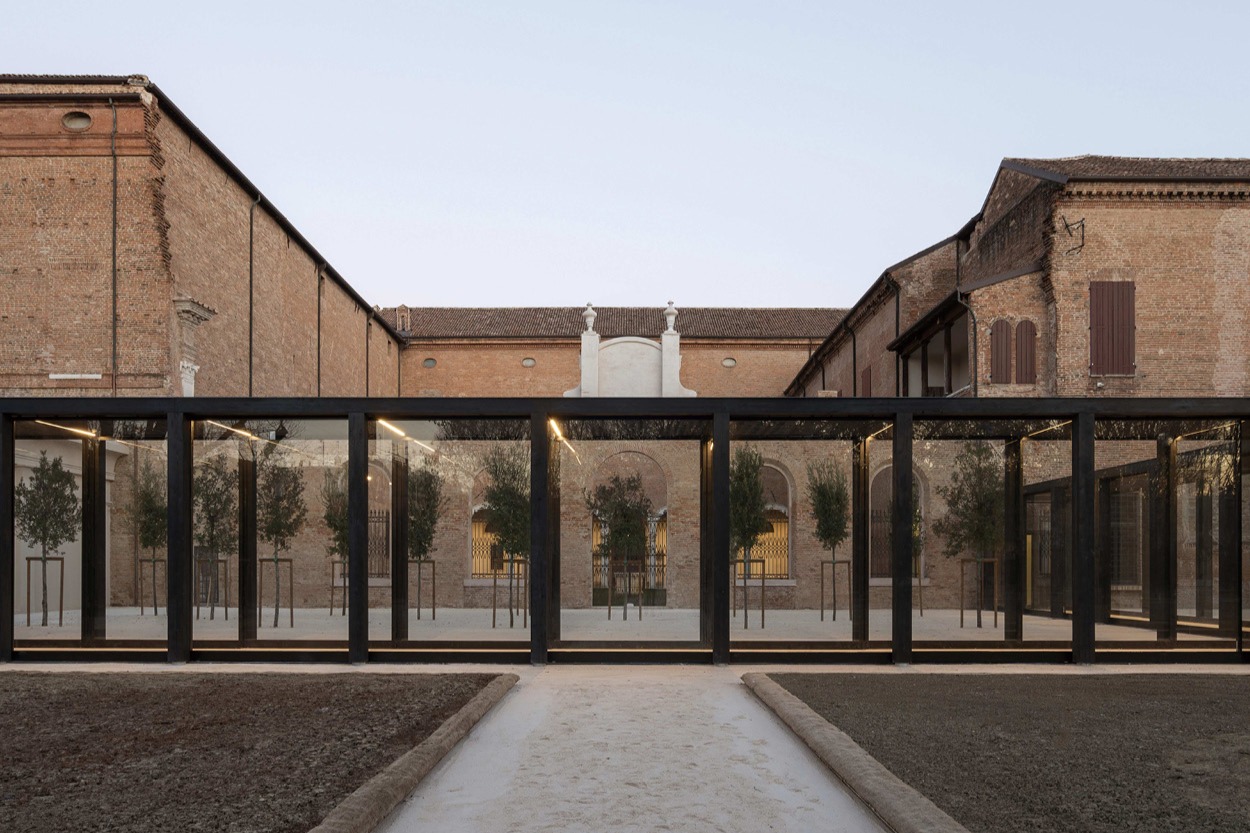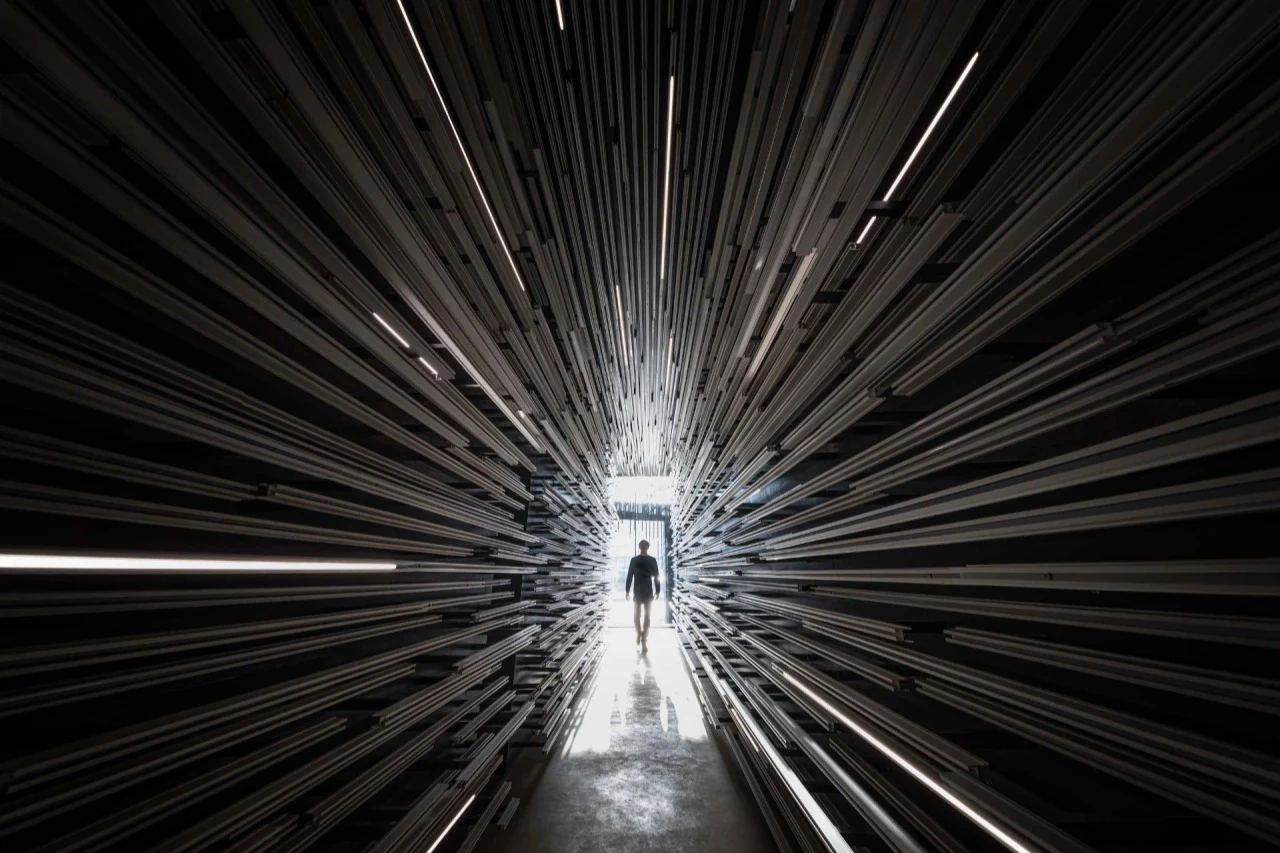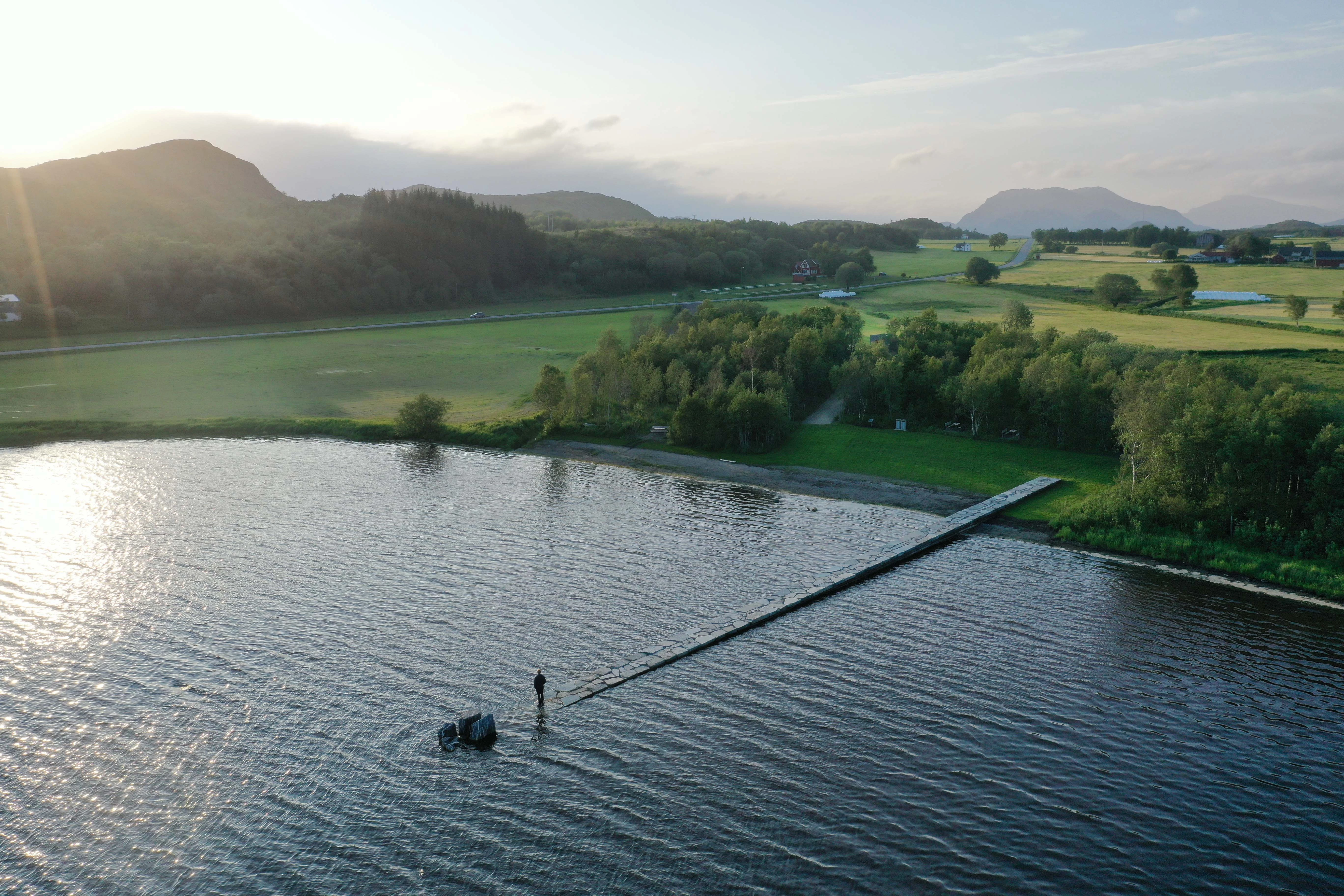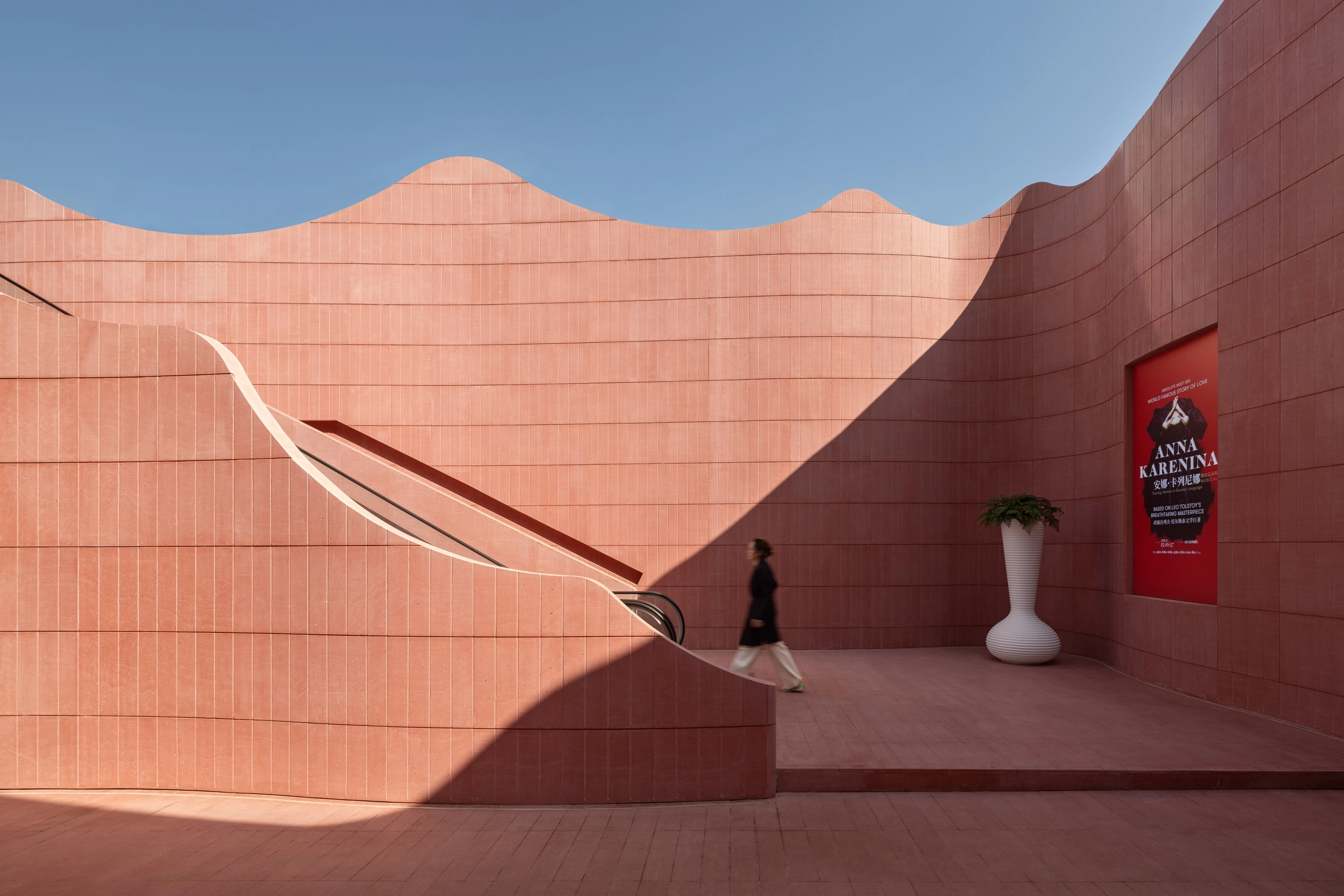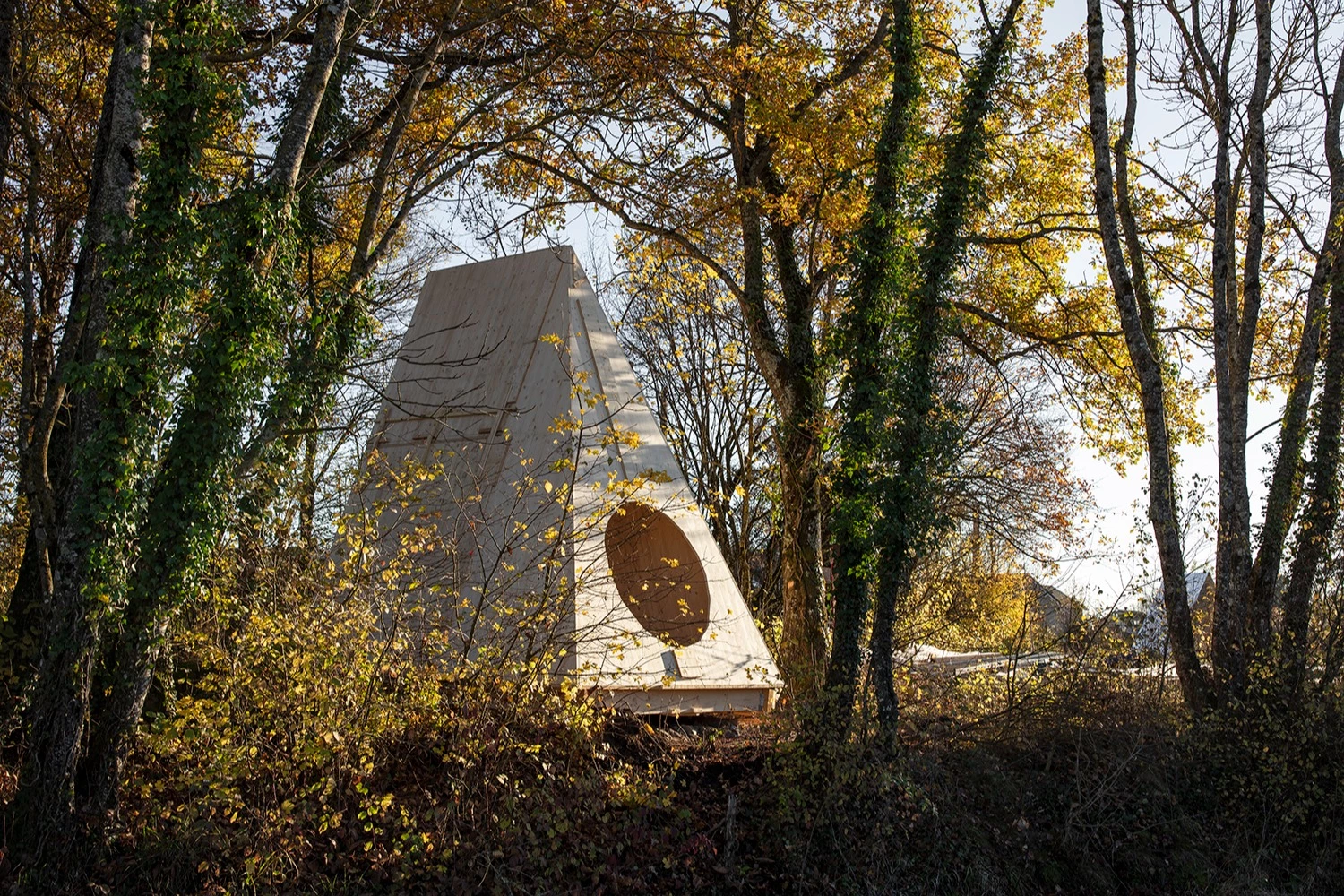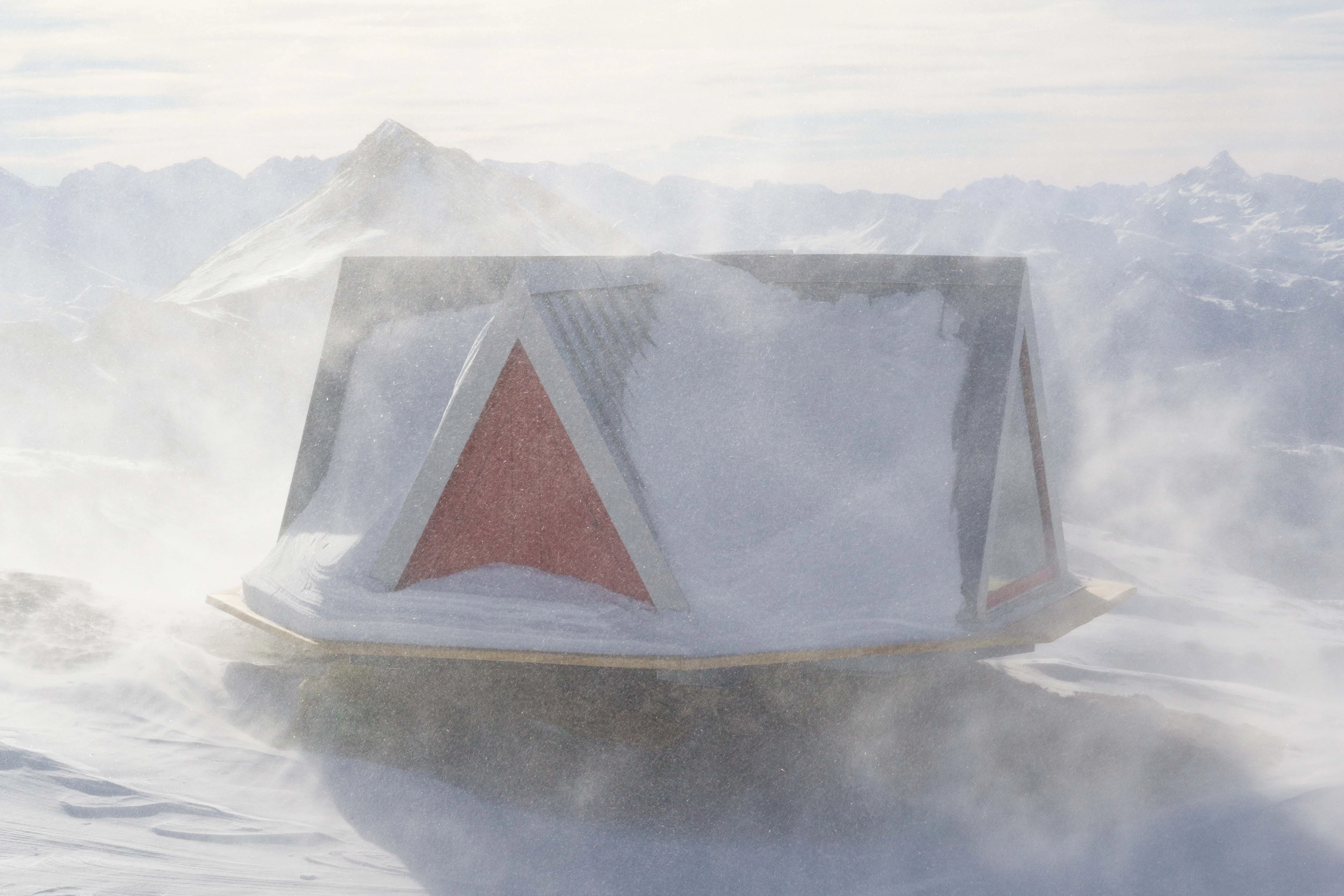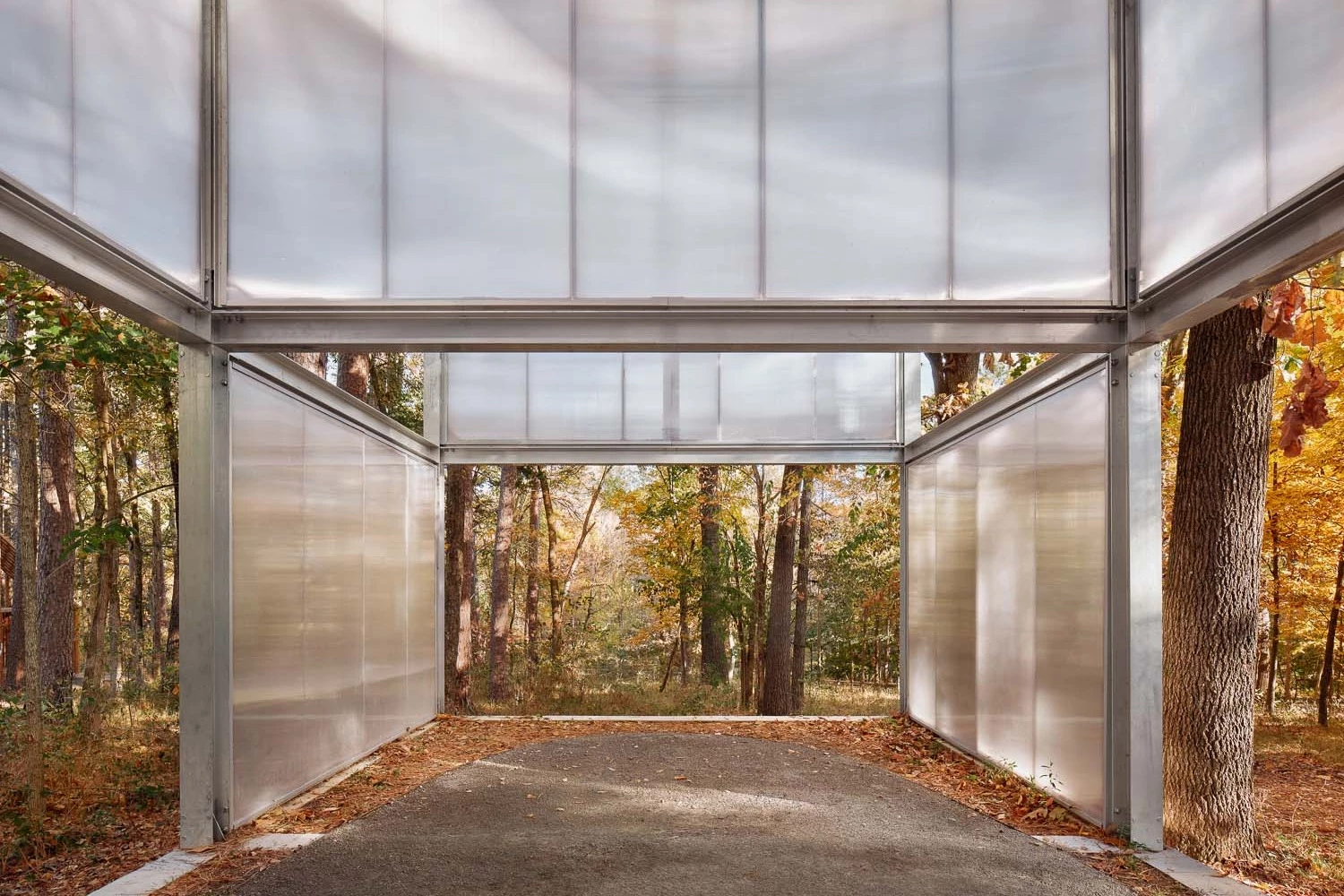義大利米蘭 路易吉.羅瓦蒂基金會新藝術博物館
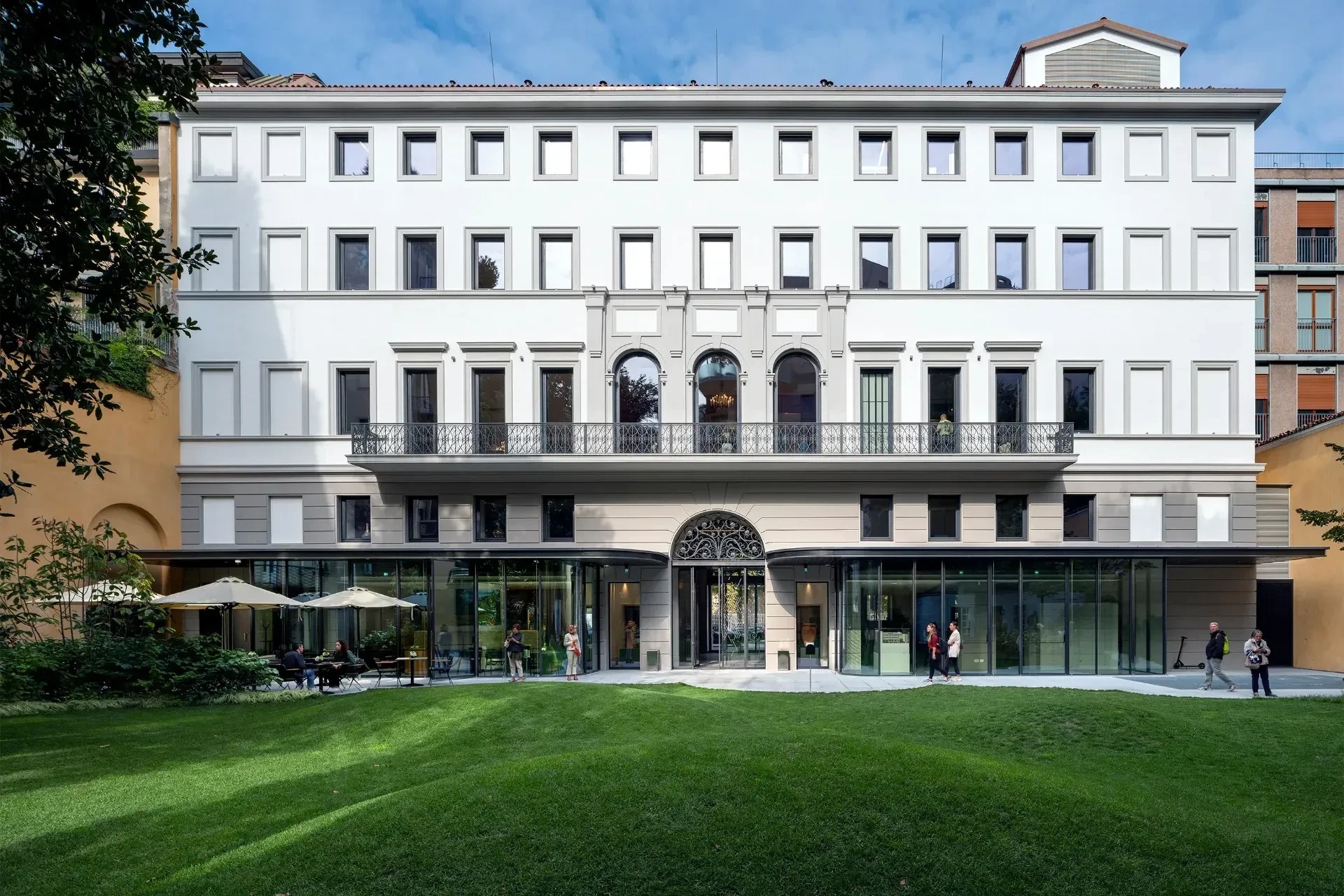
MCA Mario Cucinella Architects was commissioned by the Luigi Rovati Foundation to carry out the architectural renovation of this historic 19th-century building at Corso Venezia 52, and to extend and annex additional areas for museum uses. The new museum spaces have been conceived in respect of the pre-existing building and - without altering its characteristics - have been completed by extending the first basement floor for use as a museum and constructing a second basement floor, below the level of the existing foundations, dedicated to storage for works of art and containing all the mechanical services for the whole building.
The below-ground space is accessed from the main entrance, where a staircase carved in pietra serena, a material extracted from quarries in Tuscany and Emilia, leads to the exhibition space, consisting of three circular rooms and a large elliptical room. This space, which is in semi-darkness, is enveloped by 30,000 stone segments, each one individually designed and skilfully built and assembled so that they continuously envelop the entire space: a formal continuity that gives it a sense of unity and fluidity.
It gives the impression of a space that has been hollowed out: subtracted just as quarries are hollowed out to become works of architecture of unconscious beauty. Because of the size of each segment, which is 5 centimetres thick, one metre long, and is distanced 5 millimetres from its neighbours, the horizontal stripes of the stones give this imposing mass an effect of suspension that contrasts with the reflective specks from Mica flakes in the stone. The building is thus transformed into a journey of art through time, in its technical, poetic and human expressions.
馬里奧.庫奇內拉建築師事務所受義大利的路易吉.羅瓦蒂基金會委託,對位於這座歷史悠久的 19 世紀建築進行翻新,並針對博物館其它用途進行擴建。新的博物館空間是根據原有建築設計的,建築師在不改變其特徵的情況下,共往地下擴增兩層樓;上層作為藝術博物館,下層則用於存放藝術品,並容納整棟建築的所有機房機房設施。
地下空間可從建築主入口進入,所有階梯皆用「Pietra serena」藍灰色砂岩(一種從托斯卡納和艾米利亞的採石場所提取的材料)雕刻而成。展覽空間由三個圓形房間和一個大橢圓形區域組成,這個處於半黑暗中的空間被三萬塊石塊包圍,每個石塊都經過單獨設計,巧妙地建造和組裝,讓整體空間被包覆,形式上的連續性賦予內部某種一致性和流動感。
新博物館給人的印象如同一個被挖空的空間,像是採石場般,營造出建築那不經意的美。此外,每個石塊單元尺寸為 5 公分厚,1 公尺長,且彼此石塊間距為5毫米,經層層堆疊,賦予這個巨大結構量體一種懸浮效果,恰好與雲母的反光斑點形成鮮明對比。最終,這座建築以其技術、詩意和人文表達方式,將空間轉變為一場穿越時空的藝術之旅。







Principal Architects:Mario Cucinella
Project Leader:Giovanni Sanna
Structural Engineering:Milan Ingegneria S.r.l.
Principal Materials:Pietra serena
Location:Milan, Italy
Photos:Duccio Malagamba
Text:Mario Cucinella Architects
Interview:Grace Hung
主要建築師:馬里奧.庫奇內拉
專案經理:約翰.桑納
結構工程: Milan Ingegneria S.r.l.
主要建材: Pietra serena藍灰色砂岩
座落位置: 義大利米蘭
影像:杜喬.馬拉甘巴
文字:馬里奧.庫奇內拉建築師事務所
採訪:洪雅琪

